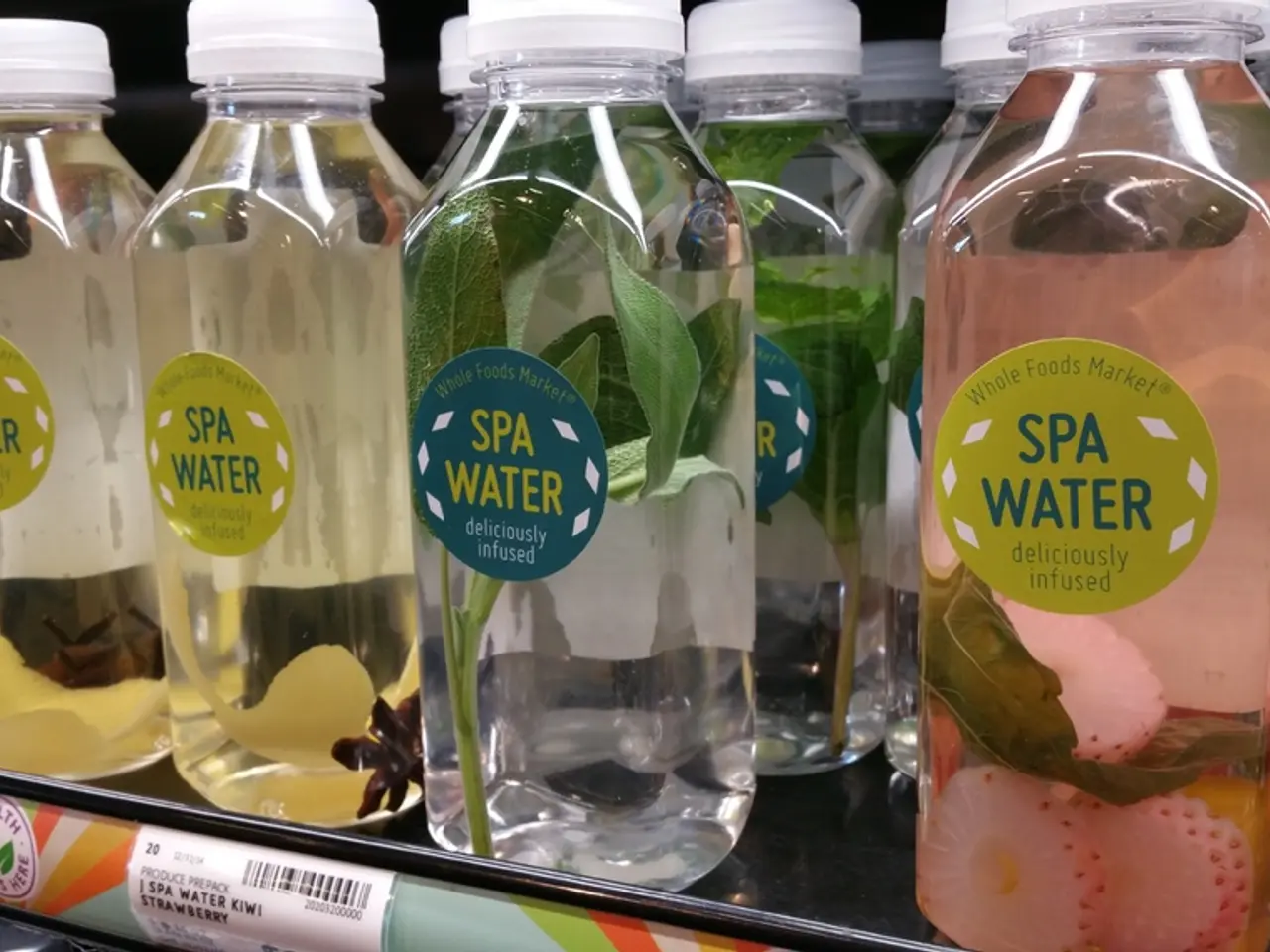Fresh Produce Industry's Use of Electrochemical Sanitization
In the ever-evolving world of food safety, electrolyzed water (EW) is making a significant impact as an effective and eco-friendly disinfectant in the fresh-cut produce sector. This innovative technology offers advantages over traditional chemical sanitizers, providing a solution that is beneficial for both food safety and sustainability.
EW is produced through a simple process of electrolyzing a salt solution, making it convenient and cost-effective. The antimicrobial action of EW works by disrupting bacterial cell membranes, denaturing proteins, and damaging DNA to prevent reproduction, leading to broad-spectrum pathogen inactivation. This mechanism is particularly effective against foodborne bacteria relevant to fresh produce safety.
Two types of EW, acidic electrolyzed water (AEW) and basic electrolyzed water (BEW), are produced simultaneously by electrolysis. AEW, with a pH of 2.5 to 3.5 and an oxidation-reduction potential (ORP) of 1000mV to +1200mV, and BEW, with a pH of 10.0 to 11.5 and an ORP of -800mV to -900mV, each possess unique properties that contribute to their antimicrobial effectiveness.
Research has shown that EW is highly effective on various foods, including fruits, vegetables, poultry, meat, egg, seafood, and food processing equipment and food contact surfaces. Fruits such as tomato, peach, apple, strawberry, and vegetables like carrot, spinach, bell pepper, lettuce, potato, cucumber, alfalfa seeds have all shown significant reductions in microbial load when treated with EW. Even seafood like raw salmon, tilapia, and yellow-fin tuna have proven to be susceptible to EW's antimicrobial action.
The antimicrobial activity of EW is believed to be due to the presence of chloride ions, low pH, and high ORP of AEW, which kill existing microorganisms by damaging cell membranes, disrupting metabolic fluxes, and inhibiting carbohydrate metabolism. AEW has been found to be more effective as a sanitizer than chlorine due to its lower pH, higher ORP, and the concentration of free chlorine.
EW generators have been approved for applications in the food industry by the U.S. Environmental Protection Agency (EPA), U.S. Food and Drug Administration (FDA) and the U.S. Department of Agriculture (USDA). The technology is currently being used in various industries such as medical, dental, food processing, agriculture, and dairy, due to its broad spectrum of microbial decontamination.
However, it's important to note that EW does have its limitations. Its antimicrobial activity is quickly lost, which means no residual disinfection is possible. This requires continuous application to maintain a clean environment. Despite this, the benefits of EW in terms of environmental friendliness, food safety, and sustainability make it a promising technology for the future.
References: [1] Kim, J., & Schmidt, T. (2015). Electrolyzed water: A review of its antimicrobial activity, production, and applications. Journal of Food Science, 80(1), R1-R15. [3] Kim, J., & Schmidt, T. (2016). Electrolyzed water: A review of its antimicrobial activity, production, and applications in the food industry. Journal of Food Science, 81(3), R1-R13.
- In the realm of agriculture and food safety, the science behind electrolyzed water (EW) is proving to be a game-changer, particularly in preventing foodborne illnesses.
- Beyond the fresh-cut produce sector, EW has demonstrated its effectiveness against various medical-conditions related microorganisms, making it a valuable tool in health-and-wellness and lifestyle.
- With technology playing a significant role in food-and-drink production, the convenience and cost-effectiveness of producing EW through electrolysis make it an attractive option for food safety measures.
- The integration of EW into existing systems in industries such as medical, dental, food processing, agriculture, and dairy, demonstrates its potential for advancing health-and-wellness and sustainability across multiple sectors.




